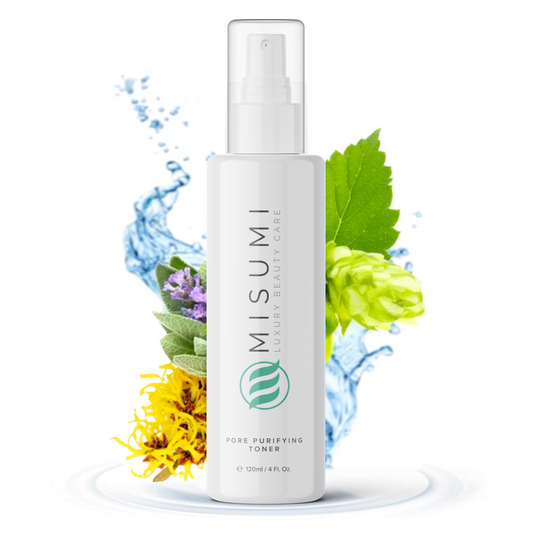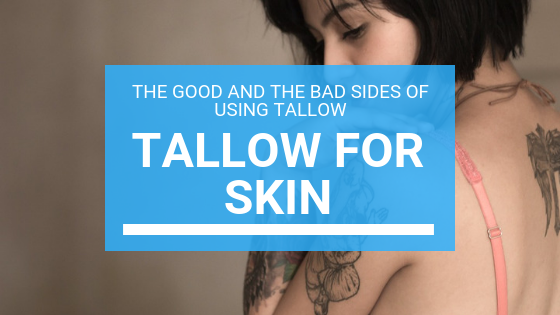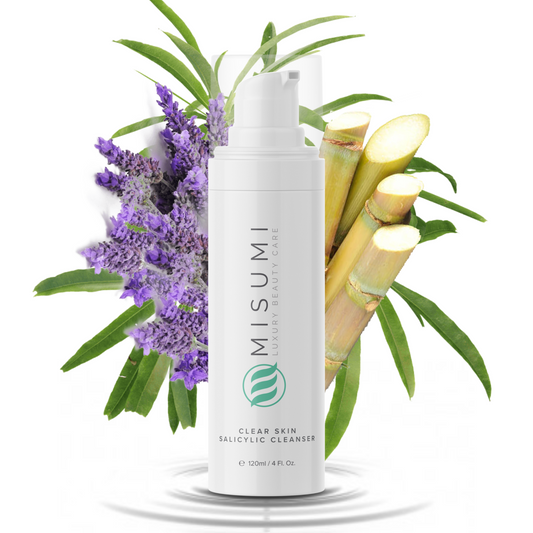When it comes to fats, we've been told we should stay away from fatty oils. But, as science progresses, we're learning that not everything is black and white. For example, tallow for skin is a healthy animal fat, high in unsaturated fatty acids. Does that make it a good moisturizer for our skin?
As this trend is coming back in full force, more and more beauty bloggers are happy to tell you they are rubbing beef fat balm on their skin as a moisturizer.
By now, we know better than to rely on anecdotal stories from people that have tried the latest beauty trend. In this article, we'll try to go beyond that and explore the good and the bad sides of using tallow as a moisturizer for your skin.
We're here to break it down for you.
What is Tallow?

tallow is an ingredient rendered from beef and mutton fat. At room temperature, it's solid. However, when it's carefully purified and has undergone cosmetic manufacturing processes, it becomes oily. To be pure, tallow must come from animals such as cows, bison, or sheep. These animals have unique digestive systems and are called ruminants. The animal must be grass-fed to have all the beneficial properties for our skin's health. This is because the food alters the composition of their fat tissue. Grain-fed animals have smaller vitamin-mineral complexes and an inflammatory imbalance of fatty acids. The benefits discussed below refer to tallow derived from only grass-fed animals.
Like coconut oil, warm tallow has liquid consistency with bright gold color, but when it's cooled, it hardens, and the color changes to a soft cream.
Tallow can be stored for extended periods, without refrigeration, only if kept in a sealed container to prevent oxidation.
The Different Types of Tallow
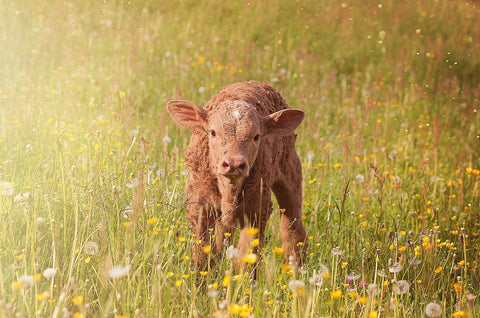
When searching for tallow, you'll probably find articles listing the benefits of mutton tallow while others speak about beef tallow. Here's all you need to know about the two types.
Beef Tallow Versus Mutton Tallow
Beef tallow is an animal fat rendered from beef, while mutton tallow is an animal fat rendered from sheep. Both ingredients are natural products with a long shelf life. They contain a high amount of saturated fats, with beef tallow being slightly more saturated than mutton which is why we prefer beef tallow for skin.
Mutton tallow animal fat has a little more vitamin E than beef tallow, although the differences might not be significant.
Tallow is known for its high oleic, palmitic, and stearic acid concentrations. Beef tallow has higher concentrations of palmitic acid, while mutton leads with more oleic and stearic acid and we believe to be better for skin health.
Composition of Fatty-Acids in Tallow

Tallow, such as beef tallow is animal fat, but that doesn't mean it's bad for our skin. What's interesting is that tallow resembles our natural sebum (the oil produced by the glands in our skin) so much that the literal translation of tallow in Latin is "sebum." The resemblance means that the ingredient is usually well received by most skin types, doesn't cause irritation, and can be a godsend for people suffering from dry skin. in other words, it's an amazing moisturizer!
Let's take a close look at the essential fatty acids per-acid composition of tallow and in particular, beef tallow.
Oleic Acid
Around 47% of the fatty acid composition of beef tallow is oleic acid. This acid is classified as a monounsaturated omega-9 fatty acid and is mostly known as an amazing ingredient for dry or aging skin because it can easily and deeply penetrate the skin's surface. Inside the dermis, it replenishes lost moisture and stops additional transepidermal water loss.
Oleic acid can restore natural oil production and prevent future breakouts. Most importantly, it doesn't clog pores but forms a protective layer on the skin's surface that prevents environmental damage.
Finally, it's high in antioxidants, meaning it can fight off free radicals and prevent damage from oxidation.

Palmitic Acid
Another important fatty acid for mature skin is palmitic acid. Did you know that levels of palmitic acid decrease as much as 50% with aging? It's safe to say we really need it.
Around 26% of the fatty acid composition of beef tallow is palmitic acid. This saturated fatty acid is widely used in cosmetics, from detergents and cleansing agents to emollients.
In a cleanser, it can be a little drying depending on what it's combined with and the cleanser's pH level - we recommend choosing a cleanser with lower pH levels. Palmitic acid is a very good emollient in moisturizers because it makes the skin soft. It retains moisture by forming an occlusive layer and improves skin health.
Stearic Acid
Stearic acid is another saturated fatty acid found in high concentrations in beef tallow. It's used in various cosmetics and personal care products as a fragrance ingredient, surfactant, and emulsifier. Stearic acid has a double function - as a surfactant and emulsifier. Surfactants are compounds that lower the surface tension between two substances, such as two liquids or a liquid and a solid. In other words, surfactants reduce the surface tension so water can penetrate the skin more easily. Stearic acid also acts as an emulsifier, meaning that it helps the product contain both oil and water without separating.
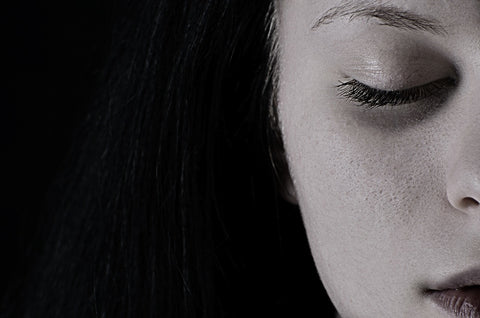
Uses and Benefits of Tallow For Skin
Cosmetic companies use beef tallow as a moisturizing ingredient to make soaps, shaving creams, lip balms, lotions, and other skincare products.
These are the most frequent benefits of using beef tallow for skin:
Preventing Dry Skin With Highly Moisturizing Properties
This natural golden oil is extremely effective in providing intense moisture to dry skin. Especially if it's grass fed tallow. It absorbs easily and prevents dryness at the cellular level without suffocating the skin's barrier. It won't clog your pores and doesn't leave a greasy feeling, which means both dry skin and oily skin type sufferers can also benefit.
Best of all, the powers of tallow are long-lasting, meaning you won't need to use it more than once a day. Your skin will be protected and moisturized even in the harshest, dry, and cold winter conditions. Nevertheless, if you live in a cold climate, check out our article on the best winter skincare tips
Promoting Younger-Looking Skin
Tallow is nourishing and high in vitamins like A, D, E, and K. Vitamin E is especially important for aging skin since it has potent antioxidative properties that protect the skin cells from damaging UV light and reduce existing damage. With this, tallow effectively handles free radicals and prevents fine lines and superficial wrinkles from developing. With regular use, you can feel your skin becoming softer and more radiant.
Vitamin E has also been shown to prevent the breakdown of collagen. In one study from 2012, published in Dermato Endocrinology, the authors found that the intake of natural vitamin E products helps against collagen cross-linking and lipid peroxidation, which are linked to skin aging.
Preventing the breakdown of collagen is a great way to prolong skin aging, and tallow can help you with that.
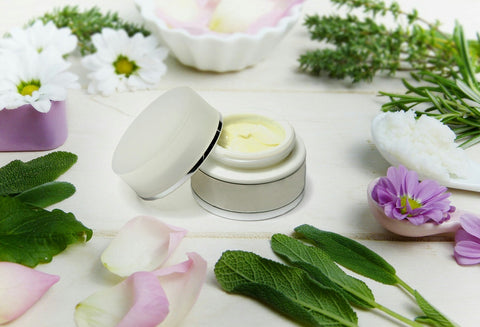
Preventing Future Breakouts
Although there's no evidence that tallow helps prevent acne breakouts directly, its moisturizing properties, the resemblance with our natural sebum, and the fact it absorbs into the skin easily make this ingredient able to control sebum production to a certain point.
The problem with acne vulgaris is a lot more complicated. The condition is a multifactorial disease meaning many things come into play to set the development of new pimples. However, sometimes ane is caused by overly active sebaceous glands that overproduce oil because of certain skincare products, environmental changes, and other external factors. In these cases, tallow can bring back the balance to your skin and calm inflammation without clogging your pores or irritating your skin barrier.
Protecting Against Damage
According to the above-mentioned study from Dermato Endocrinology, vitamin D (also found in tallow) induces the expression of antimicrobial peptide genes in human skin and plays a significant role in preventing opportunistic infections. Moreover, grass-fed tallow contains conjugated linoleic acid or CLA.
One study published in the Anticancer Research journal in 2006 investigated the link between CLA and some cancer suppressor genes. The results indicated that CLA possesses anti-cancer properties and might serve as a chemo-preventive and chemo-therapeutic agent in human breast cancers.
The science-based evidence shows us that by using tallow regularly, we can protect the skin from various external damaging factors.

Precautions and Downsides of Using Tallow For Skin
Impurity Problems
One of the main concerns when using products that contain tallow is the purity of the animal parts from which it's derived. In 2017, the FDA issued a statement concerning the prohibited and restricted ingredients in cosmetics. According to the statement, “to protect against bovine spongiform encephalopathy (BSE), also known as "mad cow disease," cosmetics may not be manufactured from, processed with, or otherwise contain prohibited cattle materials.”
Tallow that contains no more than 0.15 percent insoluble impurities, alongside hide-derived products and milk products, is excluded from that list.
You shouldn't worry about tallow in cosmetic products approved by the FDA, but you should consider this if you buy local or homemade skincare products containing tallow. There are health concerns about using tallow that isn't manufactured following the strict rules the FDA issued.
Another problem concerning the purity of tallow is the diet of the animals from which its obtained. It's impossible to know how the animals were treated before they ended up where they did. Usually, you buy products containing tallow from companies that don't breed animals but rather buy the ingredient from companies in the meat industry.
It's hard to follow the trace and get first-hand information, so it's highly advisable to only buy from brands you truly believe in and are loyal to. Fat from grain-fed animals might have inflammatory properties and lose all the benefits discussed above.

Stability Issues
Another reason tallow is avoided in skincare products is that it's unstable. The ingredients undergo various manufacturing processes, including heating, to achieve the final result.
Ingredients derived from animals have been shown to have an uncertain and uncontrollable composition of animal fats. As a result, they lack consistent color, appearance, and odor from batch to batch. So, why would you use tallow when there are more stable ingredients that are also cheap?
It's Not a Cruelty-Free Option
Tallow is an animal fat, meaning an animal must die for it to be extracted. This can be off-putting for many people, especially animal lovers. There's been a rise in the demand for cruelty-free cosmetics, and more and more giants in the skincare world are pledging to keep animals out of their formulas. This, alongside the other reasons mentioned above, is why today tallow is harder to find.
It Smells Bad
Some local manufacturers and DIY skincare enthusiasts have noted that they avoid using tallow because it smells bad. The fat itself doesn't produce a bad odor, but while the tallow is being derived, some of the muscle and other tissue from the animal can end up in the mix, making your blend smell bad. For example, reheated pork releases a characteristic off-flavor that in the industry is known as a "warmed-over" flavor.

How to Make Your Own Tallow Balm
Here's one easy-to-follow recipe for making tallow balm.
Important note: Ensure the suet you buy is from someone you trust. The animals need to have been grass-fed. Animals raised on conventional or factory farms are not recommended.
Ingredients:
-
1-2 pounds of beef or sheep suet. (Depending on whether you like beef or mutton tallow. You can probably buy suet in some local shops.)
-
Carrier oil of your choice. We recommend grapeseed oil, sweet almond oil, or olive oil.
-
Essential oils for a better scent (optional).
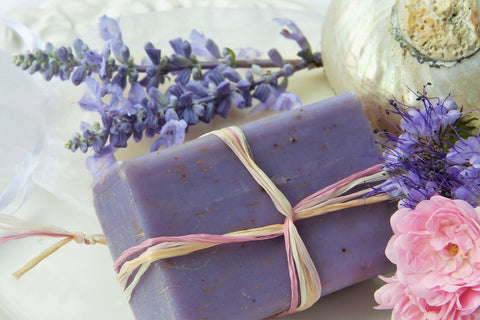
Method:
If the suet has come pre-cut into little chunks, all you need to do is dump the pieces into a crockpot to heat them. However, if your suet doesn't come pre-cut, remove as much meat as possible from the fat. This is important since cooking the meat will smell bad and can irritate your skin.
When you're done, slowly add the suet to the crockpot and start warming it on low heat. This process will take a couple of hours. Stir from time to time to prevent the tallow from burning. As a reference, one lb takes about 3-4 hours in a small crockpot.
You'll know the tallow is done when it turns to a golden-yellow color with translucent clarity. If there were some bits of meat or bones, you'll find them at the bottom of the crockpot. To ensure you don't include any impurities in the balm, strain the tallow with a cheesecloth draped over a fine mesh colander. The final product should be a clear, golden-yellow liquid.
Let it cool for a few minutes, then add the carrier oil. A good ratio is 8-10 parts tallow to 1 part of carrier oil. Add more carrier oil if you'd like the consistency to have a creamier texture.
Leave the blend to cool for 10-15 minutes before you add the essential oils. What you put depends solely on your preferences.
Transfer the blend into a glass container and store it in the fridge to speed up the cooling process so you can use it sooner.
The balm should have a clear, golden-yellow to an off-white color with a solid texture
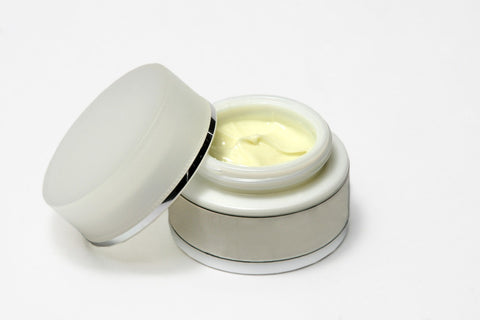
You can use the balm anytime, but it's best to apply it in the morning as a moisturizer after you finish your regular skincare routine. This way, the benefits of tallow can protect your skin during the day.
Tallow has a long shelf life, and you don't need to refrigerate it. Just ensure you're storing it in a glass-sealed container away from sunlight.

